Seasons – Spring 2016
From the Plateau Land & Wildlife Management Team,
Spring is here with its warmer and longer days, bright sunshine, singing birds, and plants awaking from their long winter slumber. While this was a bit of a mild winter and spring is already starting to feel a bit like summer, we are hoping spring showers will usher in all the little flutters of life that we enjoy so much. The spirit of spring is in this issue of Seasons providing you with what feels like a fresh start for several opportunities to improve and enjoy your land.
As the weather continues to warm up, now is the perfect time to begin gearing up for the remainder of the year. This is the time to consider the addition of products such as water tables and nest boxes to your property, as it will allow wildlife to get used to having them the rest of the year.
Spring is peak breeding and migratory season for birds making it prime time to conduct spring breeding bird surveys. These surveys provide you with an opportunity to learn the diversity of species on your property, as well as monitor the long-term trends of species composition and abundance. In this issue of Seasons, you will be able to take a glimpse into the day and life of some of the Plateau Land & Wildlife Management employees as tech, Damon Speidel, and HR Manager, Julie Mitchell take you on a journey of some of their fun adventures. There are also very informative articles on nest boxes, an important reminder about imported red fire ant control and a spring time activities checklist.
We hope this issue of Seasons will inspire you to join us in celebrating springtime. And as always, if there is any way that Plateau can help you protect, enhance or better enjoy your land just give us a call and we’ll be here when you need us.
 Until next season and Seasons,
Until next season and Seasons,
The Plateau Team
Table of Contents
The Battlefield – A Day in the Life of a Technician
Fire Ant Control Reminder
Introducing David Riley
Adventures in Wildlife Management: Nest Boxes
Ecolab: When World’s Collide, Environment and Landowners Benefit
Spring Wildlife Management Activities Check List
Property Taxes
Service Agreements Benefits
Field Trip
The Importance of a Buyer’s Agent
The Battlefield – “A Day in the Life of a Technician”
By Damon Speidel, Wildlife Services Technician
 Nearly every day I leave the office, which I call “home base,” and begin the drive to a landowner’s property. As I drive down the country roads, I go over the checklist in my mind making sure I brought all the necessary items and tools I’ll need for the journey. Frustration can go from 0 to 10 when you forgot to bring a needed item and are hours away from civilization; much like when you go camping with a group of friends and realize no one brought the toilet paper. If I’m confident in my checklist, then all systems are a go. I usually drive up to the gate of a property and scope my surroundings. There are tons of species of wildlife just beyond the fence that are waiting. Once I cross that property line, I realize that I am on their turf. Armed with a GPS, Ipad, machete, wit, and sarcasm, I begin the trek on the property with the uncertainty of what awaits me.
Nearly every day I leave the office, which I call “home base,” and begin the drive to a landowner’s property. As I drive down the country roads, I go over the checklist in my mind making sure I brought all the necessary items and tools I’ll need for the journey. Frustration can go from 0 to 10 when you forgot to bring a needed item and are hours away from civilization; much like when you go camping with a group of friends and realize no one brought the toilet paper. If I’m confident in my checklist, then all systems are a go. I usually drive up to the gate of a property and scope my surroundings. There are tons of species of wildlife just beyond the fence that are waiting. Once I cross that property line, I realize that I am on their turf. Armed with a GPS, Ipad, machete, wit, and sarcasm, I begin the trek on the property with the uncertainty of what awaits me.
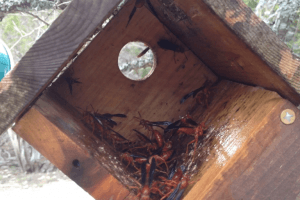 Now having been a wildlife management technician for Plateau over the past four years, I have seen my share of action. I have installed and recorded thousands of songbird boxes, feeders, water collection systems, and done fire ant treatment on enough acreage that would probably collectively be the size of the King Ranch, so I guess you could say I’m pretty seasoned. Many times, there are at least 30 nesting boxes to be checked on a given property, sometimes more, and each box has the potential to give you a little surprise. I am always excited to see a nest of eggs or even some baby birds, but as nature would see it, a nesting box is fair game for all. Mice, lizards, black widows, ants, scorpions, ringtails, frogs, brown recluses, snakes, wasps, and even flying squirrels! waspsThe mice aren’t so bad and are rather cute, but the wasps have other fun features they try to share with me if I dare disturb them. Being chased away by wasps is not always on the top of my “to-do” list for the day but what am I going to do, try and talk some sense into them? That is where some wasp spray comes in handy, as long as you are a decent aim and can get them all at once. By nature, I am a very careful person, so I am always looking around me as I check nest boxes and wildlife product. Stumbling upon a group of sleeping feral hogs as they jump up and race off can be like sticking your finger in an electrical outlet so I always try to be ready mentally for whatever might be out there.
Now having been a wildlife management technician for Plateau over the past four years, I have seen my share of action. I have installed and recorded thousands of songbird boxes, feeders, water collection systems, and done fire ant treatment on enough acreage that would probably collectively be the size of the King Ranch, so I guess you could say I’m pretty seasoned. Many times, there are at least 30 nesting boxes to be checked on a given property, sometimes more, and each box has the potential to give you a little surprise. I am always excited to see a nest of eggs or even some baby birds, but as nature would see it, a nesting box is fair game for all. Mice, lizards, black widows, ants, scorpions, ringtails, frogs, brown recluses, snakes, wasps, and even flying squirrels! waspsThe mice aren’t so bad and are rather cute, but the wasps have other fun features they try to share with me if I dare disturb them. Being chased away by wasps is not always on the top of my “to-do” list for the day but what am I going to do, try and talk some sense into them? That is where some wasp spray comes in handy, as long as you are a decent aim and can get them all at once. By nature, I am a very careful person, so I am always looking around me as I check nest boxes and wildlife product. Stumbling upon a group of sleeping feral hogs as they jump up and race off can be like sticking your finger in an electrical outlet so I always try to be ready mentally for whatever might be out there.
As I rummage through the brush, fighting my way through the mesquite and cedar trees getting scratched and poked, I begin to weaken but I rally and motivate myself by knowing I have almost completed the necessary activities for this site visit. The thought of encountering a mountain lion usually runs through my head once or twice a day but I know how unlikely that is. Even though I would love to see one, a mountain lion encounter is not exactly on my bucket list. As I finish monitoring the last nest box and get back to the work truck, I begin to fill out the digital log sheet summaries to show all the activities I did that day. Once I am finished, I start my journey back towards the “home base.” Victory is not yet awarded until I have made it back safely. As my mind begins to wonder why I keep doing this job, I know all I need to do is to take a second and look around. I not only get the privilege of seeing many privately owned areas of Texas that no one else does, but I also get to help make a difference in a preserving that land. I realize this is only possible because our land owners have put their trust in Plateau Land & Wildlife Management to take care of their land and do what is beneficial. It is truly great to be a part of that.
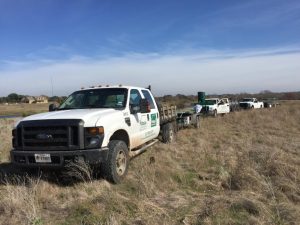 Many times, I make it back to the “home base” parking lot at, or after the office has closed for the evening and as I turn off the work truck, I usually start to ponder any problems I encountered that day. I might think about the scratches on my hands and arms that haven’t quite stopped bleeding yet, the frustration of not being able to find a nest box that was so clearly marked on the GPS, the muscle I pulled because I too quickly lifted a feed bag while filling a feeder, the flat tire I had to change because I ran over a sharp rock, or the idea that tomorrow might be the same thing all over again. I might dwell on all these things, but whenever I do, a smile comes to my face as I think, “Well… it sure as hell beats sitting behind a desk all day!”
Many times, I make it back to the “home base” parking lot at, or after the office has closed for the evening and as I turn off the work truck, I usually start to ponder any problems I encountered that day. I might think about the scratches on my hands and arms that haven’t quite stopped bleeding yet, the frustration of not being able to find a nest box that was so clearly marked on the GPS, the muscle I pulled because I too quickly lifted a feed bag while filling a feeder, the flat tire I had to change because I ran over a sharp rock, or the idea that tomorrow might be the same thing all over again. I might dwell on all these things, but whenever I do, a smile comes to my face as I think, “Well… it sure as hell beats sitting behind a desk all day!”
Back to TopBack to Top
Fire Ant Control Reminder
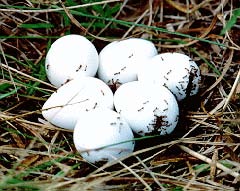
Quail eggs attacked by IRFA
Plateau finds the key time for imported red fire ant (IRFA) control is now through June*, before the heat of summer hits. When the ants are hot (or cold) they go deep into the ground for temperature regulation and do not actively forage above ground. They also go deep during dry periods in order to find moisture and come above ground during wet periods. Why does IRFA control matter? The impact of imported red fire ants in the state of Texas is estimated to be $1.2 billion annually. These non-native ants are pests of urban, agricultural, and wildlife areas and can pose a serious health threat to plants and animals (Texas Imported Fire Ant Research Project). The ants can sting to death and consume any animal or insect that cannot defend itself including nestling birds and young animals, and the insects and other arthropods they eat are important forage resources for other wildlife.
For more information on IRFA control, contact Plateau.
* Treatment starts up again in September after the heat of the summer and before the cold of winter.
Back to TopBack to Top
Introducing David Riley
David is a recent graduate of Texas A&M University with a degree in wildlife ecology and management. He is a 4th generation Texan who grew up in the central Texas area. Throughout college, David worked for Texas A&M Agrilife Extension Services and Texas A&M Agrilife Research. David most recently worked with Texas Parks and Wildlife Department at the Chaparral Wildlife Management Area in Cotulla, Texas and on a private ranch in Central Texas. He has a passion for traveling that has led him to many wonderful places throughout Texas and the world including his most recent venture to South Africa. His goal was to come back to the area where he first recognized his interest in wildlife and educate others about wildlife management through his experiences. David’s passion for wildlife and enthusiasm for educating landowners about their property makes him a wonderful fit here at Plateau.
David joins Plateau as a Staff Biologist- Annual Report Administrator. He is involved in every step of the annual report process from collecting documentation to working directly with CAD’s. David is excited to work with all of Plateau’s clients to ensure that everyone is not only receiving a quality report, but that landowners have a better understanding of the wildlife management activities and how they benefit the native wildlife of Texas. David wants everyone to feel welcome to stop by or give him a call anytime.
Back to TopBack to Top
Adventures in Wildlife Management: Nest Boxes
By Mark Gray, Senior Wildlife Biologist
One of the more common and rewarding wildlife management activities is the use of nest boxes for supplemental shelter. Carolina Wren, Carolina Chickadee, Black-crested Titmouse, Tufted Titmouse, Purple Martin and Eastern Bluebird are local, cavity-nesting songbird species that utilize nest boxes for additional shelter and nesting. But nest boxes are not limited to songbirds. It is not uncommon to also find non-target species like ringtails, snakes, squirrels, and amphibians nesting in these boxes. Whatever the species is that you are managing for, the practice of monitoring and cleaning out nest boxes can be rewarding and adventurous at the same time.
The Wow Factor
The most exciting factor of checking nest boxes is the “what will you find” aspect of opening any box. Whether it’s finding tiny blue eggs inside a bluebird nest box, observing squawking babies in a nest, or seeing ducklings emerge from the nest box, these are all amongst the greater rewards for monitoring nest boxes. Knowing that you have provided a structure that aided in the continuation of that species is also pretty amazing. Regardless of how many times I’ve seen it, having an Eastern Screech-Owl perched in the window of a box is an especially rewarding aspect of my job.
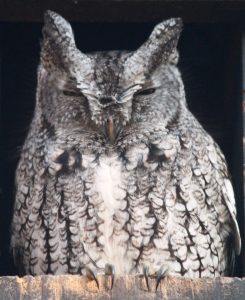
The Unexpected Can Also Be Exciting
Ideally, you would always have the experience of finding evidence that each box is being used by the target birds you are managing for. Sometimes, you will be surprised to find some really interesting non-target species that utilize nest boxes as shelter. Some of the species that we have encountered over the years range from ringtails, bats, mice, flying squirrels (in our eastern counties), squirrels, lizards, snakes, and even amphibians. Unfortunately, there is also the possibility that bees or wasps may have used the box, and we’ve even seen a box covered by a mass of ants.
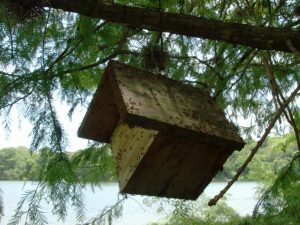
What’s the Best Nest Box Solution for Your Land?
Providing supplemental shelter for cavity-nesting species is an excellent and often rewarding wildlife management practice. Providing cavities can be done through a combination of nest boxes, or creating and maintaining snags (dead trees) on your property. We offer a variety of species-specific nest boxes ranging from wrens to owls to titmouse. Please contact us if we can help you decide which nest box(es) best fit(s) your needs.
Ecolab: When World’s Collide, Environment and Landowners Benefit
 Richard Garriott may be best known as an explorer of other worlds – a god among video gamers, he was the world’s first second-generation space traveler and sixth private astronaut. But Garriott is also a lifelong environmental advocate and conservation activist here on Earth. So when he bought some beautiful, wild Central Texas land connected to the Balcones Canyonlands Preserve, Garriott knew he wanted to do more to protect the property than simply let it be. “I believe the spirit of conservation isreally high among most people,” Garriott says. “But I also think most people don’t know the legal requirements and don’t understand the issues around conservation, what defines good stewardship and land management.”
Richard Garriott may be best known as an explorer of other worlds – a god among video gamers, he was the world’s first second-generation space traveler and sixth private astronaut. But Garriott is also a lifelong environmental advocate and conservation activist here on Earth. So when he bought some beautiful, wild Central Texas land connected to the Balcones Canyonlands Preserve, Garriott knew he wanted to do more to protect the property than simply let it be. “I believe the spirit of conservation isreally high among most people,” Garriott says. “But I also think most people don’t know the legal requirements and don’t understand the issues around conservation, what defines good stewardship and land management.”
Likewise, very few people know about government programs that reward landowners for being good land stewards, and even fewer understand the details. With this in mind, Garriott contacted conservation law firm Braun & Gresham, where attorney Cassie Gresham introduced him to the Texas EcoLab program. The program, developed by and offered through Braun, connects conservation- minded landowners with university ecological researchers. The landowners agree to let their property be used primarily for research for two years, at which point their land can transition into wildlife management appraisal. The EcoLab program advances significant ecological research while providing landowners with substantial – and prompt – property tax savings. “Normally, you must graze your property for five years to receive favorable agriculture valuation tax rates, and it’s an average of ten years before you see a return on your investment,” explains Gresham. “The EcoLab program offers a cost-effective alternative, with clear tax savings within the first year and return-on-investment in just over two years.
To learn more about Texas EcoLab program and Richard Garriott, visit Braun & Gresham’s website by clicking here.
Spring 2016 Wildlife Management Activities Check List
By Kameron Bain, Business Development Manager
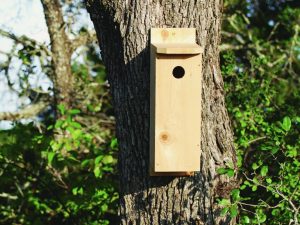 Spring is here! The Hill Country is beginning to wake up and come back to life. Soon the grass will be greener, the trees will start to bloom and all our favorite creatures will start to reappear. There are also a lot of fun wildlife management activities to check off your list in spring. With longer days and enjoyable temperatures, spring is one of the best times of year to check off some of your wildlife management to-dos!
Spring is here! The Hill Country is beginning to wake up and come back to life. Soon the grass will be greener, the trees will start to bloom and all our favorite creatures will start to reappear. There are also a lot of fun wildlife management activities to check off your list in spring. With longer days and enjoyable temperatures, spring is one of the best times of year to check off some of your wildlife management to-dos!
- Nest Boxes & Supplemental Shelter – The spring birds are starting to arrive so you need to clean out your nest boxes ASAP
- Predator Control
- IRFA – It is predicted that imported red fire ants will be very active this spring
- Brown-headed cowbirds during breeding bird season
- Erosion Control
- Supplemental water
- Spring Census Breeding Bird Census
- RE-Seeding native grasses
Property Taxes
By Cassie Gresham, Managing Partner and Attorney, Braun & Gresham, PLLC
It is a very busy time at our office right now – it is property tax season. While most landowners know that May 1st is the deadline to submit your open space applications for agricultural, wildlife management, timber, and Ecolab, they might not also realize that this the time to review your Notice of Appraised Value and protest your taxes. Here are a few tips to follow:
- Don’t forget to refile your open space valuation application – If you purchased property between April 30, 2015 and April 30, 2016, you need to reapply for the open space valuation on your property. This also applies if you transferred your property to an entity or trust.
- Review your Notice of Appraised Value – you should be looking to make sure that your open space valuation is in place and your market value isn’t too high.
- Don’t miss the deadline to protest – the Notice of Appraised Value will have the deadline to protest and it is typically 30 days from the date you receive your Notice.
- Don’t miss your Appraisal Review Board hearing – you are given only one opportunity to reschedule the hearing, so don’t miss your opportunity to make your case.
- Don’t miss your opportunity to appeal the ARB’s ruling – you have 60 days from the date you receive your ARB notice to appeal to District Court.
If you have any questions regarding your taxes or Notice of Appraised Value, please call me and I will be happy to help.
Back to TopBack to Top
Service Agreements Benefits
By Kameron Bain, Business Development Manager
Each year more than 200 landowners purchase an Annual Wildlife Management Service Agreement to help implement their wildlife management plans. Here are just a few benefits these landowners are taking advantage of each year:
- Ease and Peace of Mind: Plateau will take care of your activities giving you more time to enjoy your property resting easy knowing your valuation is being taken care of and you are moving toward the goals set forth in your Wildlife Management Plan.
- Proper Documentation: Not only are your activities being covered but also well documented by our team of Wildlife Management Services Technicians and Biologist. When the CAD asks for your annual report, you will be prepared.
- Annual Review: As part of the renewal process the Plateau team reviews your property and all the documentation collected throughout the year to ensure that you continue to meet the guidelines for compliance and that your activities are productive and working toward your property goals. We then make recommendations on improvements or changes to ensure compliance and to assure you get the most out of your service agreement.
- Customized for your needs: Whether your goal is simple compliance, becoming a true land steward, or somewhere in between, we can customize the agreement to suit your goals.
- Customized for your budget: We will work with you to create an agreement that works for your property as well as your wallet. Plateau service agreement clients have options of paying all at once or quarterly throughout the service agreement year to make wildlife management even easier.
Plateau has become a leader in offering wildlife management by providing consistent, professional service to hundreds of landowners. When you are connected to Plateau through an Annual Service Agreement you will know you are not in the wildlife management game by yourself. We’re with you every step of the way and only a phone call or a visit to the office away.
Back to TopBack to Top
Field Trip
By Julie Mitchell, HR Manager, Plateau Land & Wildlife, Inc.
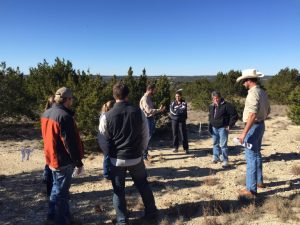 Part of what we value here at Plateau Land & Wildlife Management, Inc. and what I believe makes Plateau a great place to work, is the company commitment to employee development and training. At Plateau, employees are fortunate to be able to learn about any and all aspects of the company in any way possible. In fact, a few weeks ago, I and several other staff members had the opportunity to take a field trip and have a hands-on learning experience related to what our biologists and techs do on a daily basis. We were allowed to observe a consulting site visit on a property not far from our office. This experience lets us see and hear for ourselves what others encounter every day here at Plateau. It was the perfect opportunity to view a property and observe while Shane Kiefer, Director of Ecological Services and certified Senior Wildlife Biologist, walked with the landowners on their property. He carefully took them through the different species of trees, plants and shrubs on the property. He listened to them as they described what wildlife they have encountered and other things they have seen. They took an opportunity to discuss with him what their goals were for their property and then he made suggestions about how to achieve those things. Shane also explained the landscape as well as made suggestions about improvements and other ideas about conserving their land.
Part of what we value here at Plateau Land & Wildlife Management, Inc. and what I believe makes Plateau a great place to work, is the company commitment to employee development and training. At Plateau, employees are fortunate to be able to learn about any and all aspects of the company in any way possible. In fact, a few weeks ago, I and several other staff members had the opportunity to take a field trip and have a hands-on learning experience related to what our biologists and techs do on a daily basis. We were allowed to observe a consulting site visit on a property not far from our office. This experience lets us see and hear for ourselves what others encounter every day here at Plateau. It was the perfect opportunity to view a property and observe while Shane Kiefer, Director of Ecological Services and certified Senior Wildlife Biologist, walked with the landowners on their property. He carefully took them through the different species of trees, plants and shrubs on the property. He listened to them as they described what wildlife they have encountered and other things they have seen. They took an opportunity to discuss with him what their goals were for their property and then he made suggestions about how to achieve those things. Shane also explained the landscape as well as made suggestions about improvements and other ideas about conserving their land.
As the HR Manager, I don’t get out in the field much and I found it interesting and important to be out on the land, learning about the landowners commitment to improving their property. The most important thing I gained from this training opportunity, was a greater understanding what a wonderful job our biologists do on a daily basis. This activity only confirmed my faith in their vast knowledge and understanding of rural land in Texas. This helped me to understand and serve our company better as an employee and I am grateful that Plateau Land & Wildlife Management provides and supports these learning opportunities to every one of its employees.
Back to TopBack to Top
The Importance of a Buyer’s Agent
By John Melnar, Realtor ® Plateau Land Group
Most buyers do not realize that hiring a buyer’s agent usually costs them nothing. Finding the right property often involves much more than just searching the internet. At Plateau Land Group, we have many tools and capabilities at our disposal that make us stand out from any other Rural Real Estate company. We are skilled in many facets in rural land, from evaluation of the recreation or agricultural value, to assessing the wildlife habitat, and identifying potential pitfalls. All these skills help a potential new landowner in the selection of only qualified potential properties.
So, if you are considering buying a rural property in Texas, I hope you consider Plateau Land Group. Let us help to guide you through the process, and prove that we can serve you better than you’ve ever imagined possible with a rural land real estate specialist.
Back to TopBack to Top




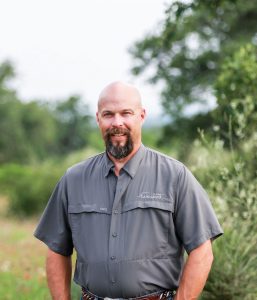




Sorry, the comment form is closed at this time.